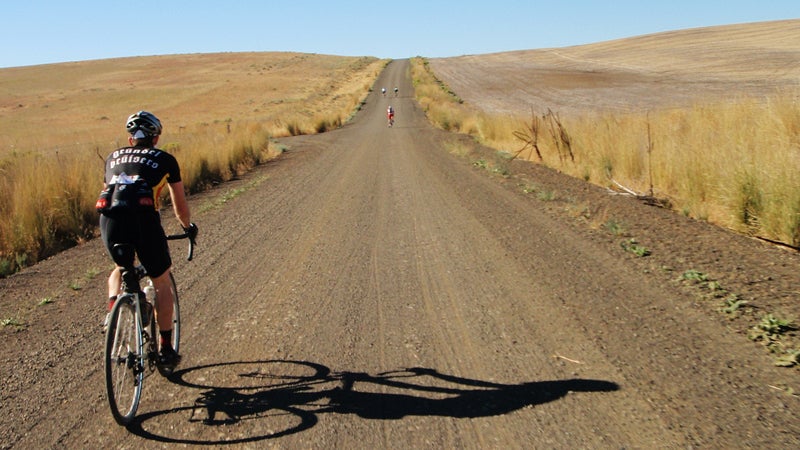If you live outside the Midwest, should you care about so-called “gravel-grinder” bikes? Put another way: Is a bike that’s purpose-built for those who like to ride on unimproved roads through hog and farm country pelted by horizontal rain a good bike for sane people, too? I spent a month on a to find out.
 The Raleigh Tamland 1
The Raleigh Tamland 1The $1,600 price tag was the first thing I noticed. About a year ago, I ended up talking with five friendly bike thieves—four crackheads and one professional with an angle grinder—and they all said that $1,000 dollars was the cutoff. The druggies claimed to rob only bikes that cost less, because that risks a mere misdemeanor in most states. The pro said he’d risk a felony rap only for bikes that cost thousands of dollars. So the Tamland would appeal to neither, and I could probably leave it locked up outside for a couple hours without it getting stolen. It could be a commuter.
Riding ten miles to a coffeeshop supported the idea. The heavy wheels spun up to speed slowly, but once moving, they rolled as easily as those skinny tires on a friend’s crotch rocket. Even better, the disc brakes had no problem slowing me down in the wet, and the 40mm-wide tires really gripped the road. Years earlier, riding a skinny-tire bike on the same water-glazed stretch of highway, I’d stomped on the pedals, felt the rear wheel slip, and highsided into the ditch. I tried the same on the Tamland and it just galloped forward.
But what about epic rides? A buddy and I ditched out on a big organized ride to ski powder, so I can’t say how fast the 25-pound Tamland is in comparison to a 20-pound Roubaix, but I certainly enjoyed it on a couple multi-hour spins. Descending a steep hill, my eyes watered before I could feel a quiver or twitch. On the flats, the 1060mm-long wheelbase made it track so straight that I could pump the pedals without holding onto the handlebars and with my eyes closed. And the tall head tube meant that I could gain speed by grabbing the drop bars, but when I rested my hands on the top of the bars, my weak old back was at a comfortable 45 degrees. The longer I rode the Tamland, the better it felt.
On one of my last outings, I lowered the tire pressure to 60 psi and tried to break the thing, hammering through a network of trails that I’d recently crawled up and bombed down on a fancy full-suspension rig. No surprise: a $4,500 mountain bike the Tamland was not. Its front wheel, at the end of a rigid slack fork, slipped out on a wet root, sending me tumbling, and the chainring dulled its teeth on a woop-de-do. But nothing broke! The steal frame and low tire pressure mellowed the gravel double track and absorbed the hits they couldn’t mellow. I got deeper into the woods than ever before. Swooping down an unfamiliar stretch of smooth dirt singletrack was a giddy experience. And I was just as pleased to be spat out on an unrecognized country road, which offered a hypnotic cool-down spin home.
Bike geeks will surely parse the details of the Tamland 1 soon enough. I suspect it’ll prove a heck of a deal, besting the handful of direct competitors, such as the or the . Meanwhile, call it a gravel grinder if you want—I’m going with quarter horse. The Tamland is probably the most versatile, well-behaved, and eager bike I’ve ridden.
$1,600,


